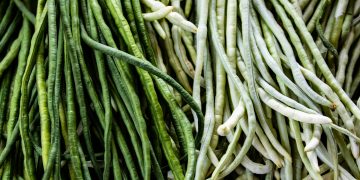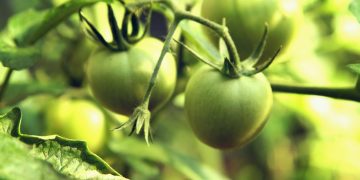1. Introduction to Onion Growth Stages
Onions, those omnipresent staples of the kitchen, have a development travel that's both captivating and vital to get it for any trying patio cultivator. In this comprehensive direct, we'll dive into the different stages of onion growth, demystifying the method from seedling to bulb in easy-to-follow segments.
Some time recently we got our hands grimy within the cultivation, it's fundamental to get a handle on the basics of onion development. We'll examine the essential development stages and their noteworthiness in deciding the victory of your onion collection.
2. Vegetative Growth: Laying the Foundation
Amid the vegetative development stage, onion seedlings center on leaf improvement, laying the basis for future bulb arrangement. Lavish green foliage isn't a visual charm but a vital component within the plant's photosynthesis handle, where it changes over daylight into vitality.
Each leaf that spreads out speaks to a potential ring on the onion bulb, highlighting the importance of maximizing leaf generation amid this stage. Satisfactory watering and nutrient-rich soil are significant to back energetic leaf development, guaranteeing that the onion plants have the assets they got to flourish and eventually abdicate a ample collection of flavorful bulbs.
3. Maximizing Vegetative Growth
Maximizing vegetative development is basic for setting the arrangement for an effective onion gathering. Legitimate watering is fundamental, guaranteeing that the soil remains reliably damp but not waterlogged, advancing sound root improvement and productive supplement take-up. Moreover, giving an adjusted fertilizer wealthy in nitrogen empowers energetic leaf generation, giving the onion plants the vitality they have to thrive.
Avoiding pointless trimming is another key procedure. Whereas it may be enticing to trim back foliage to clean up the plant, each leaf plays a vital part in photosynthesis and bulb improvement. Evacuating foliage rashly can ruin the plant's capacity to produce vitality, eventually hindering development and lessening bulb size.
By following these principles of proper watering, nourishing, and dodging superfluous trimming, you'll be able guarantee that your onion plants are prepared for strong vegetative development, laying the establishment for a bountiful collection of flavorful bulbs come collect time.
4. Transition to the Bulbing Stage
The move to the bulbing stage marks an essential minute within the onion's development journey, affected by moving sunshine hours and regular changes. As days stretch or abbreviate depending on geological area, onions react by starting bulb improvement. Watching the unobtrusive signals in your culture can assist you recognize this transition.
One of the foremost apparent signs is the breaking of soil around the base of the onion plants, demonstrating the development of the bulb underneath the surface. Furthermore, the cessation of unused leaf development and the redirection of vitality towards bulb arrangement ended up clear as the plants entered this phase.
By remaining adjusted to these signals and understanding the effect of natural variables on onion development, nursery workers can effectively manage the move to the bulbing stage. This mindfulness enables them to supply ideal conditions for bulb improvement, eventually guaranteeing an effective collection of full, flavorful onions when the time comes.
5. Deciphering Day-Length Varieties
Disentangling the subtleties of day-length onion assortments is pivotal for selecting the correct cultivars that flourish in your particular developing conditions. Short-day assortments, regularly suited for southern locales with milder winters, require less sunshine hours to start bulb formation. They're best planted within the drop for a late spring harvest when sunshine hours are shorter.
Intermediate-day assortments bridge the hole between brief and long-day onions, perfect for locales with direct climates and moderately adjusted day lengths. These onions start bulbing as sunshine hours increment amid the spring and early summer months.
Long-day assortments, custom fitted for northern locales with longer summer days, require sufficient daylight to fortify bulb development. Planted in early spring, they develop afterward within the summer, capitalizing on amplified sunshine hours.
By understanding the day-length inclinations of onion assortments, cultivators can make educated choices, optimizing their planting plans to adjust with the normal rhythms of their nearby climate. This information guarantees that onions get the suitable natural signals for effective development and plenteous harvests.
6. Troubleshooting Common Issues
Investigating common issues is a necessary portion of keeping up a sound onion trim, guaranteeing that potential challenges do not wreck your cultivating endeavors. Catapulting, the untimely blooming of onions, can happen due to stressors like temperature vacillations or insufficient watering. To avoid blasting, select bolt-resistant assortments and give steady dampness and direct temperatures.
Disease and bug invasions posture extra dangers to onion wellbeing.
Common infections such as onion decay and wool buildup can be anticipated by practicing trim turn and guaranteeing appropriate waste to diminish dampness levels. Bugs like onion thrips and onion hatchlings can be hindered with social hones like evacuating plagued plants and applying natural bug sprays as needed.
By expeditiously distinguishing and tending to these issues, cultivators can protect their onion edit and moderate potential misfortunes. Customary checking, legitimate sanitation, and convenient mediation are key to keeping up a flourishing onion cultivation all through the developing season.
7. Harvesting and Beyond
Collecting onions at the proper time is basic to protecting their quality and flavor. When the tops start to yellow and drop over, it's a sign that the bulbs are prepared to gather. Carefully extricate the soil around the bulbs and tenderly lift them from the ground, taking care not to bruise or harm them.
After gathering, onions ought to be cured to progress their capacity life. Lay them out in a warm, dry zone with great circulation for a few weeks until the external skins are dry and papery. Once cured, trim the tops and roots, clearing out a number of inches of intaglio, and store the onions in a cool, dry, and well-ventilated area.
Conclusion: Cultivating Onion Expertise
As we wrap up our investigation of onion developing stages, it's clear that victory lies in understanding the subtleties of each stage and adjusting your approach in a similar manner. Outfitted with this information, you're well-equipped to set out on a fulfilling journey of onion development, changing your patio into a flourishing desert spring of flavor and plenitude. Upbeat growing!
With each segment carefully created to educate and enable, this direct gives a comprehensive guide for amateur and experienced nursery workers alike.
Whether you are a green-thumbed devotee or a inquisitive fledgling, opening the privileged insights of onion developing stages guarantees a satisfying travel filled with culinary delights and plant triumphs.
























